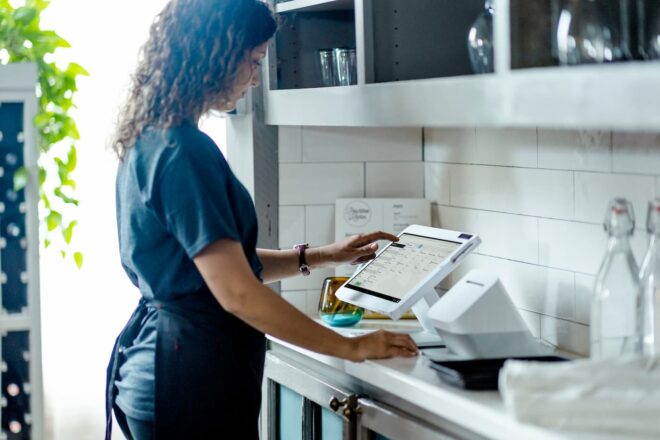How to make a high-performing kids’ menu for your restaurant
Editorial Team
6 min read
A menu designed especially for the kiddos can hold a certain appeal for busy parents. If the smaller portions and lower prices aren’t enough of a draw, then a menu that offers food kids can and will eat sure can be.
For restaurant owners, a kids’ menu can be a boon to profit margins (thanks to lower-priced, kid-friendly items) and to traffic–think parents, their children, and maybe a few of their friends.
A standout kid’s food menu should appeal to kids and parents, mesh well with the restaurant’s cuisine, and maximize profits wherever possible. With the right preparation and research, any restaurant can offer a kids menu that appeals to kids and their parents.
This guide offers 5 simple steps to help you on your way to creating a killer kids menu.
1. Research customers, food, and competition
It’s true generally that the more you understand your customers’ wants and needs, the better you can serve them. This is especially true when building a kid’s menu.
To get the insights you need to build a great kids’ menu, be sure to research 3 key areas: your customers, your own menu, and your competitors’ menus.
Customers
Understanding who your customers are and what they like is crucial to building a menu of any kind. And, with Clover you’re in luck. Clover’s reporting and tracking functions can offer some very helpful insights into customer trends. Key an eye out for trends like: What kinds of foods are selling best, like vegan, vegetarian, gluten-free? Or, do your customers gravitate towards comfort food menu items? Are people ordering family-sized meals in-store or to go? How large is your average guest party? Information like this can help zero in on what foods to consider for your kids’ menu and what changes you might like to make on your main menu to accommodate families. And, remember social media can also be a great tool for gleaning insights from your customers. For instance, consider sending out a survey on your social channels asking your followers what they’d like to see in a kids’ menu.
Food
Your Clover POS can offer insights about the foods you’re selling. For example, what are your most popular dishes? What dishes have the largest profit margins? Are there certain days when specific foods sell better than others? What days are your sales at their lowest? This kind of info can be a helpful stepping stone to building out a kids’ menu–and to determining when you might want to run promos for families–think, family night when kids eat at a discount.
Competition
Finally, look at kids’ menus at other popular family restaurants in your area to see what they offer and what you’ll be competing with. Think about gaps on their menus that you can fill. If the competition is offering burgers and chicken nuggets, add some healthful alternatives to your menu.
2. Select your food
Building a kids’ menu is tricky. You have to balance a wide range of ages, tastes, and food allergy considerations. Turn to the info you uncovered in your research to make a list of ideas of menu items that appeal to children and address food sensitivities. Brainstorm a few ideas for foods that are free of gluten, nuts, and dairy, for instance. Now, compress that list into a handful of menu items that can satisfy kids and their parents while maximizing profit.
Keep these things in mind, too.
Choose foods that fit your cuisine
Keeping your kids menu in line with the items on your regular menu can help streamline your process, from ingredient sourcing to ordering and inventory management. For example, if you run a Thai restaurant, stocking ingredients for mac and cheese could add to your costs and add complexity to your kitchen. Instead, try reducing portion sizes to create child-size portions. Or, create dishes that offer simplified versions of the items you already offer.
Offer food for a range of ages
A kids’ menu might serve children from ages 3 to 12, so consider offering options for each age. A snack plate or “finger food” is an easy option for toddlers while older children might enjoy a simplified version of items on the adult menu.
Be sensitive to allergies and dietary preferences
Parents often appreciate healthy menu options for their kids when on-the-go. Those could include vegetarian/vegan options and options that address food allergies and sensitivities. So design dishes that are can easily be modified to accommodate special dietary needs. Consider alternatives for dishes with common allergens like peanuts, dairy, and gluten. And, offer meat or a meat substitute as an add-on to a menu item.
Choose foods with easily accessible and inexpensive ingredients
While you want parents and children to like your food, remember that children don’t always clear their plates. So, an expensive, hard-to-procure ingredient may simply go to waste. What’s more, by using simple, easily-procured ingredients, you can reduce costs and boost profits.
3. Design your menu
Dining with kids can be stressful for parents. A clear, simple kids’ menu with nutrition and allergen info can help reduce that stress–and speed up the ordering process. Adding portion sizes and calling out finger-foods can make a parent’s experience even better.
For kiddos, keep dish names simple and rename dishes to make them more appealing to kids. For instance, instead of offering simply Pad Thai, consider offering Thai Noodles with Peanuts. And, remember that disposable menus with a place to color or draw can go a long way toward keeping children entertained while their parents eat.
4. Make your space kid-friendly
No matter how popular your kid’s menu is, parents are not likely to return if your restaurant can’t easily accommodate children. That means your restaurant may need to accommodate strollers, offer high chairs or booster seats, and easily add or remove chairs from tables. Kid-sized utensils, cups with lids, and plates that won’t break are also great options for younger children.
What’s more, kids can get hungry fast. Consider offering ready-made appetizers for the kiddos, like a small portion of veggies and dip or bread and butter for them to munch on while waiting for food. You can also offer simple entertainment, like a coloring page and a small box of crayons to keep kids from getting bored too quickly.
5. Experiment, experiment, experiment
In a restaurant as in life, almost nothing works perfectly the first time. The key to introducing and maintaining a successful kids’ menu is experimentation and feedback. Check in with your staff periodically to see what they’re observing and hearing.
And, check in with your customers to learn what’s working for them and what isn’t. Your Clover POS offers the tools you need to your customers’ thoughts on your menu. Clover Feedback, for instance, is an app that lets you have private, one-to-one conversations with your customers, directly through your point of sale. Clover Feedback lets you hear customer input and even respond to complaints. And, it comes free with your Clover POS.
Remember: it’s okay to cut menu items that aren’t working and try something new instead. So have fun building your new kids’ menu. Be sure to learn more about Clover Customer Engagement and how it could be a great help as you research, design, and maintain a high-performing kids’ menu.
Related Posts
5 essential apps for car mechanics and auto repair shops
Simplify business management with ABC Paper Rolls
Popular Topics
Stay in touch
Sign up and learn more about Clover.
Thank you for your subscription!
More posts about starting a small business
eBook
Retail roadmap: Financial goal-setting for the year ahead
Please share your contact information
to access our premium content.
Thank you for sharing your contact information.
Download Now





